- Beautiful Mountain Phase II UHV Transmission Project is the first project for China's UHV technology to go overseas

On the vast land of Brazil, the towering iron towers run overhead with silver-white power transmission wires. This is the second-phase UHV power transmission project in Brazil's Beautiful Mountains, which is independently invested, constructed and operated by the State Grid Corporation of China. On May 19, 2015, the second phase of the UHV power transmission project in Meilishan started a magical journey under the witness of the leaders of the two countries.
On December 27, 2020, the 6th China Industry Award, the highest award in China's industrial field, was grandly announced in Beijing. The second phase of the UHV power transmission project in Brazil's Meilishan won the China Industry Award this year, becoming the first overseas Chinese enterprise to win the China Industry Award. project. According to reports, this is after the 1000kV Shandongnan-Nanyang-Jingmen UHV AC Test Demonstration Project, the Qinghai-Tibet Power Interconnection Project, the National Wind-Light Storage and Transmission Demonstration Project and the Xiangjiaba-Shanghai ±800kV UHV DC Transmission Demonstration Project. State Grid Corporation of China won the award for the fifth time in a row, setting a record of the only five times in China to win this award.
Nortel transfers Chinese technology to the South
Brazil's energy demand is growing rapidly, and energy resources and productivity are distributed inversely. In Brazil, hydropower is the main power source. In 2012, hydropower accounted for 70% of Brazil's installed capacity, and there is still a lot of room for development. Brazil's electricity load is relatively concentrated, with 80% of the load distributed in the southern and southeastern regions, while the power generation capacity of the Amazon River Basin, which is located in the north of Brazil with the most abundant hydropower resources, can only meet the local electricity demand. With the increasing demand for electricity due to economic development in recent years, it is urgent to send large-scale electricity to the southern and southeastern power load centers to achieve optimal allocation of energy resources.
UHV is an advanced, safe, efficient and green power transmission technology, and it is also China's world-leading major independent innovation achievement. UHV has the comprehensive advantages of large capacity, long distance, low loss, and low land occupation, as well as outstanding economies of scale and network economy, and plays a huge role in ensuring energy security, economy, and clean development. The development of UHV power transmission, the implementation of large-scale energy development and large-capacity, long-distance transmission is a feasible development path to ensure safe and reliable energy supply and meet the needs of Brazil's energy, economic and social development. Zhang Zongxin, construction manager of the converter station of the Meishan Phase II project company of the State Grid Brazil Holding Company, introduced that in addition to the application of Chinese standard UHV DC transmission technology, the Meishan Phase 2 project also uses China's relatively mature technical experience, which is a Chinese technology A successful example of "going out".
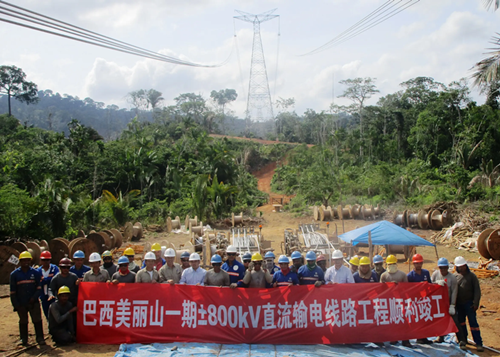
The first and second phases of Brazil's Meilishan Hydropower Transmission Project are the supporting transmission projects of the second largest hydropower station in Brazil, Meilishan Hydropower Station (with a designed installed capacity of 11 million kilowatts). It is China's first UHV "going out" project. It is reported that the first and second phases of the project both adopt ±800 kV UHVDC technology, with line lengths of 2,084 kilometers and 2,539 kilometers, respectively. They were put into operation in December 2017 and October 2019, respectively. The total power transmission capacity of the two phases of the project is 8 million kilowatts, which can send about three-quarters of the electricity of the Meilishan Hydropower Station to the load center in southeastern Brazil, meeting the annual electricity demand of 22 million people in core areas such as Sao Paulo and Rio de Janeiro, while providing 2.5 million locally. 10,000 jobs have been created, effectively driving Brazil's economic and social development.
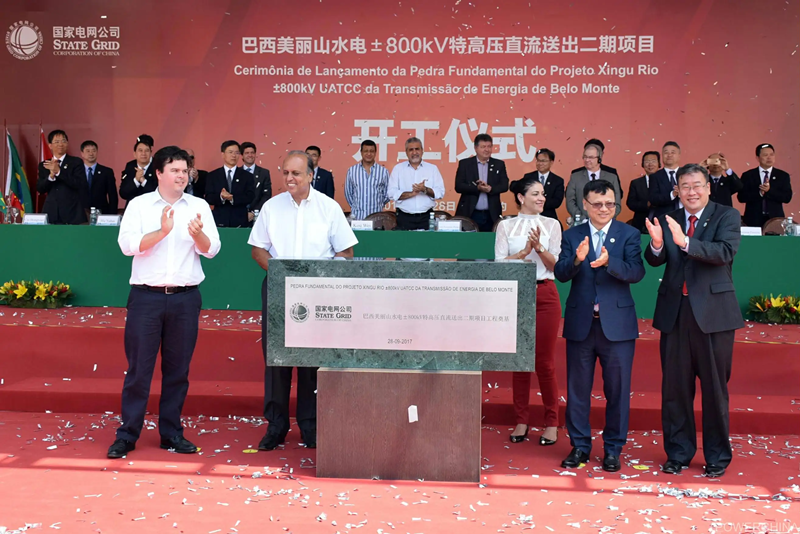
The second phase of the beautiful mountain project spans five states in Brazil, passing through aboriginal living areas and geological reserves, and there are many historical sites along the route. Chinese companies conduct archaeological surveys on the entire line of the project and protect the relics found. In order to do a better job of environmental protection and implement Brazil's environmental protection policy, the second phase of the beautiful mountain project specially hired a local Brazilian expert as the chief environmental officer of the project. Shu Yinbiao, chairman of State Grid Corporation of China, said that the Meilishan project has successfully achieved the goal of "going out" of China's UHV transmission technology, marking that China's UHV transmission technology, specifications and standards have officially entered the stage of global application. The successful operation of the Brazilian project proves that China's UHV technology and the "China solution" can effectively solve the current unbalanced power development pattern in Brazil and promote the green development of Brazil's energy economy.
According to statistics, the Meilishan Phase II project, which was put into operation in October 2019, has an annual power output of 20 billion kWh, which meets the annual electricity demand of 20 million people in Brazil and effectively relieves the shortage of electricity in developed areas in southern and southeastern Brazil. This is just a starting point. Build a "power corridor", convert abundant clean energy into electricity, and solve the problem of reverse distribution of clean energy and electricity load centers. Currently, the Global Energy Interconnection Development Cooperation Organization (hereinafter referred to as the Cooperation Organization) is looking at the energy interconnection of Central and South America based on such Brazilian experience.
UHV Electric Expressway
Brazil is chosen as the first stop for China's UHV power grid construction "going out", first of all, it has a situation similar to China's reverse distribution of clean energy and electricity load centers. According to Xu Hanbing, the first staff member of the cooperation organization in Central and South America, Rio de Janeiro is equivalent to Beijing and Sao Paulo is equivalent to Shanghai. They are big consumers of electricity, but hydropower exists in the mountains thousands of miles away. In Brazil, 80% of the electricity load centers are distributed in the developed southern and southeastern regions, while the power generation center is located in the Amazon River Basin with the most abundant water resources in northern Brazil, with a north-south span of more than 2,000 kilometers.
In addition, Brazil, as the largest country in Central and South America, in recent years, with the expansion of its economic scale, the problem of insufficient domestic power supply has become increasingly prominent. In 2015, electricity prices for Brazilian residents rose by more than 50%, making power supply a top priority for Brazil's development. The Amazon River in Brazil is rich in hydropower resources. For a long time, it has been difficult to develop and deliver hydropower in the depths of the rainforest, and great resources have been wasted. How to send hydropower out of the rainforest has become a major problem that needs to be solved in Brazil's sustainable development. Therefore, the UHV "electric highway" debuted.
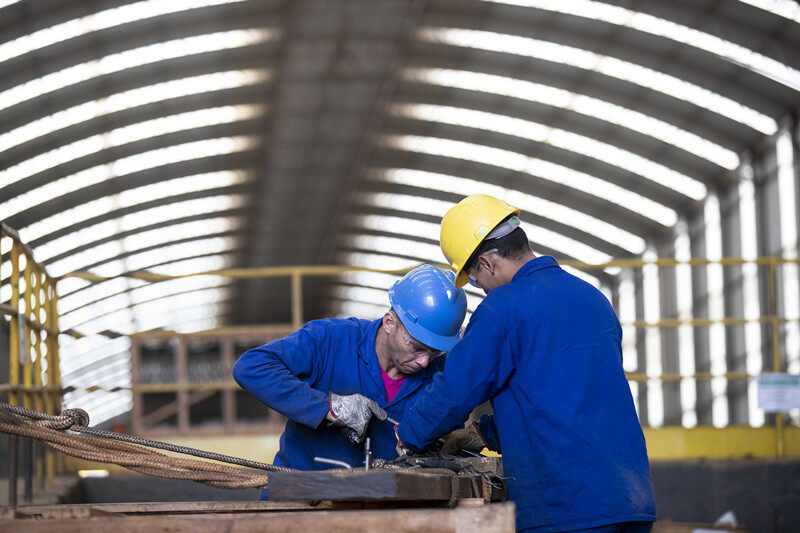
In 2017 and 2019, the first and second phases of the UHVDC transmission project of Meilishan Hydropower were completed and put into operation successively. Now, the UHV grid is carrying a strong and stable current to drive Brazil's economic and social development with a steady stream of clean electricity. Fernando Coelho, then the Minister of Mines and Energy of Brazil, believed that the first and second phases of the UHVDC transmission project of Meilishan Hydropower was a landmark project of Brazil-China cooperation. The project not only improves the security, stability and power supply reliability of Brazil's power grid, but also effectively alleviates the energy shortage in the southeast. It also accumulates more green energy development concepts and UHV transmission technology experience in Brazil.
Now, China's self-developed UHV technology has reached a higher level, with a maximum transmission voltage of ±1,100 kV. The core technologies, equipment and standards of UHV DC and AC are all in their own hands. Klaus Vuchrel, former chairman of the International Electrotechnical Commission, said that China's UHV transmission technology is in the lead in the world, and China's UHV AC voltage standard will be promoted to the world as an international standard. The Chinese technicians who participated in the construction also felt that the former students have become the current teachers.
An executive of Brazil's National Electric Power Company said: "We are looking at the technical advantages and operating experience of China's State Grid." More than ten years of practical experience in UHV engineering has enabled China to develop core technologies, engineering design, equipment manufacturing, construction, and construction. In terms of operation and other aspects, a mature system has been formed, which is difficult for other competitors to match. The first and second phases of the Meiliangshan project have realized the "going out" of China's UHV investment, construction, operation and integration of technology, standards and equipment, making China's UHV at the forefront of the world.
Electricity infiltrates Central and South America
The dilemma of Brazil's hydropower resources being far from load centers is not an exception. In 2018, the then president of the Argentine Electricity Wholesale Trading Center, Leo Bragglat, said in a meeting with the cooperative organization that the photovoltaic and wind power resources planned to be developed in Argentina are mainly located in the northwest and south-central, and are more than 2,000 kilometers away from the load center. Argentina needs a large number of long-distance transmission facilities. Known as the "dry pole of the world", the Atacama Desert has sunny and less cloudy weather for nearly 300 days a year, making Chile the country with the most abundant solar energy resources in Central and South America. According to the calculation of the cooperative organization, Chile's solar energy technology can be developed up to 17.8 billion kilowatts, and the average development cost of photovoltaic power generation is extremely low. In the face of such abundant resources, Chile has only developed 2.7 million kilowatts of photovoltaic power generation installed capacity, and the development rate is less than 2/10,000.
On the other hand, Ecuador, Bolivia, Paraguay and other countries are faced with power outages and blackouts to varying degrees every year. In 2016, the per capita installed capacity and annual electricity consumption in Central and South America were 0.7 kW and 2,100 kWh, respectively, 87% and 67% of the world average. According to the United Nations Economic Commission for Latin America and the Caribbean, as of the end of 2017, there were still 12 million people without electricity in Latin America. How to transform the advantages of clean energy resources into economic advantages and ensure the safe supply of energy has become a difficult problem that plagues the sustainable development of countries in Central and South America.
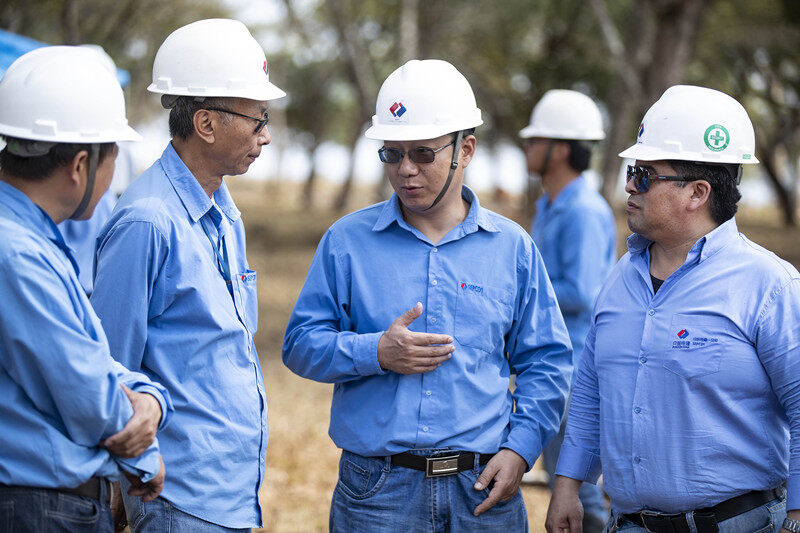
In recent years, the cooperative organization has conducted in-depth research on the resource endowment, energy demand, economic and social situation of Central and South American countries, and proposed a systematic plan to build the Central and South American Energy Internet, promote the development of large clean energy bases and power interconnection.
It is understood that the reverse distribution of energy resources and demand in Central and South America and the seasonal attributes of clean energy determine the need to build the Central and South American Energy Internet. Realize large-scale optimal allocation of clean energy. The construction of the Central and South American Energy Internet will form a power supply and demand pattern of "transmitting water from the north to the south, wind from the south to the north, light from the west to the east, and mutual aid across continents". By 2050, clean energy in Central and South America will account for 72% of primary energy, the per capita annual electricity consumption will be three times that of 2016, and the average power generation cost will drop by about 50% compared with the current level, enabling everyone to enjoy sustainable energy.
At present, the Central and South America Energy Interconnection program is being accelerated. It is reported that the cooperation organization has signed cooperation agreements with the United Nations Economic Commission for Latin America and Caribbean, the Ministry of Mines and Energy of Brazil, the Ministry of Energy of Chile, the Latin American Energy Organization, and the South American Energy Integration Commission to jointly promote the innovation and development of Central and South America. Juan Aranguren, Argentina's Minister of Energy and Mining, said: "The grand vision of the Global Energy Interconnection has drawn a blueprint for the development of the world's energy. We are willing to work with cooperative organizations to promote the construction of the Energy Internet in Central and South America." Editor/He Yuting
Comment
 Praise
Praise
 Collect
Collect
 Comment
Comment
 Search
Search



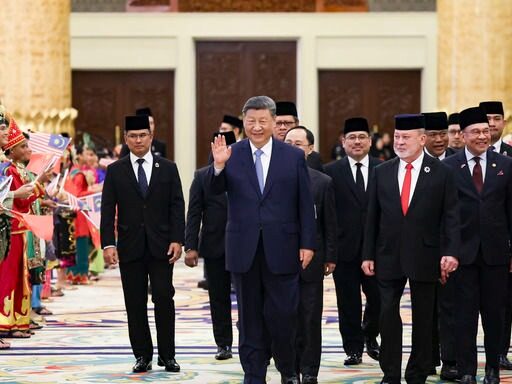

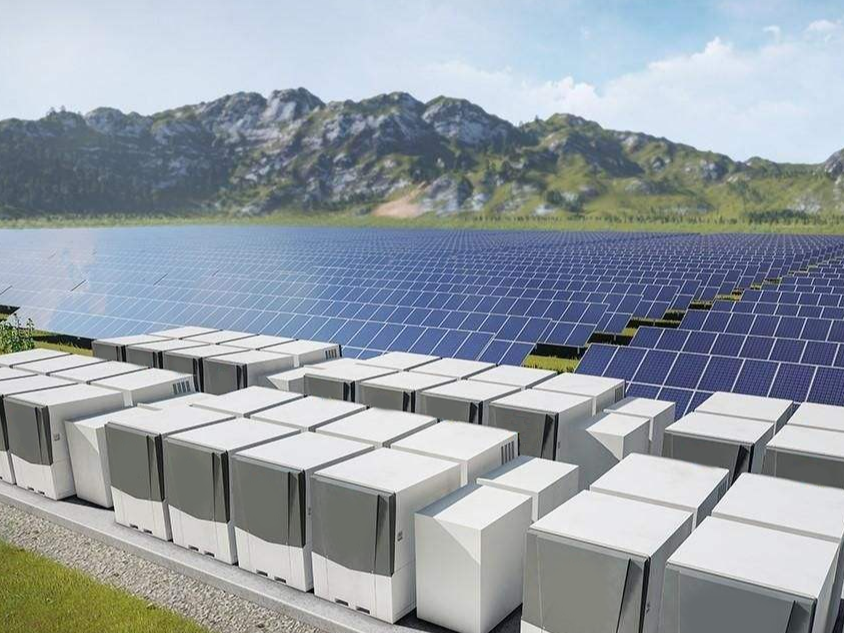

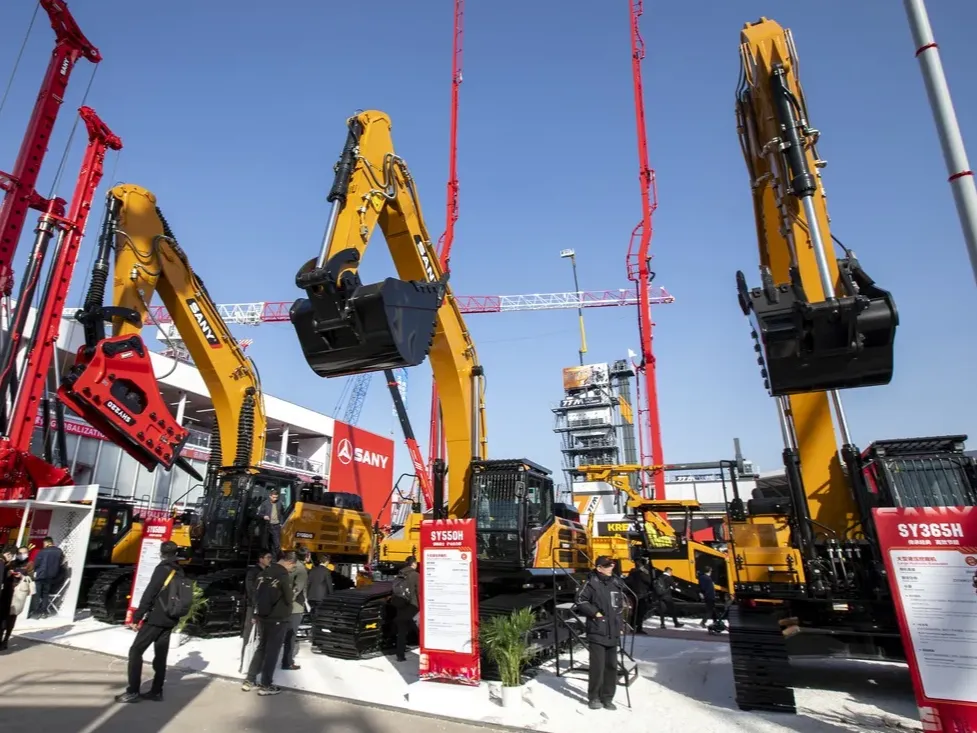






Write something~